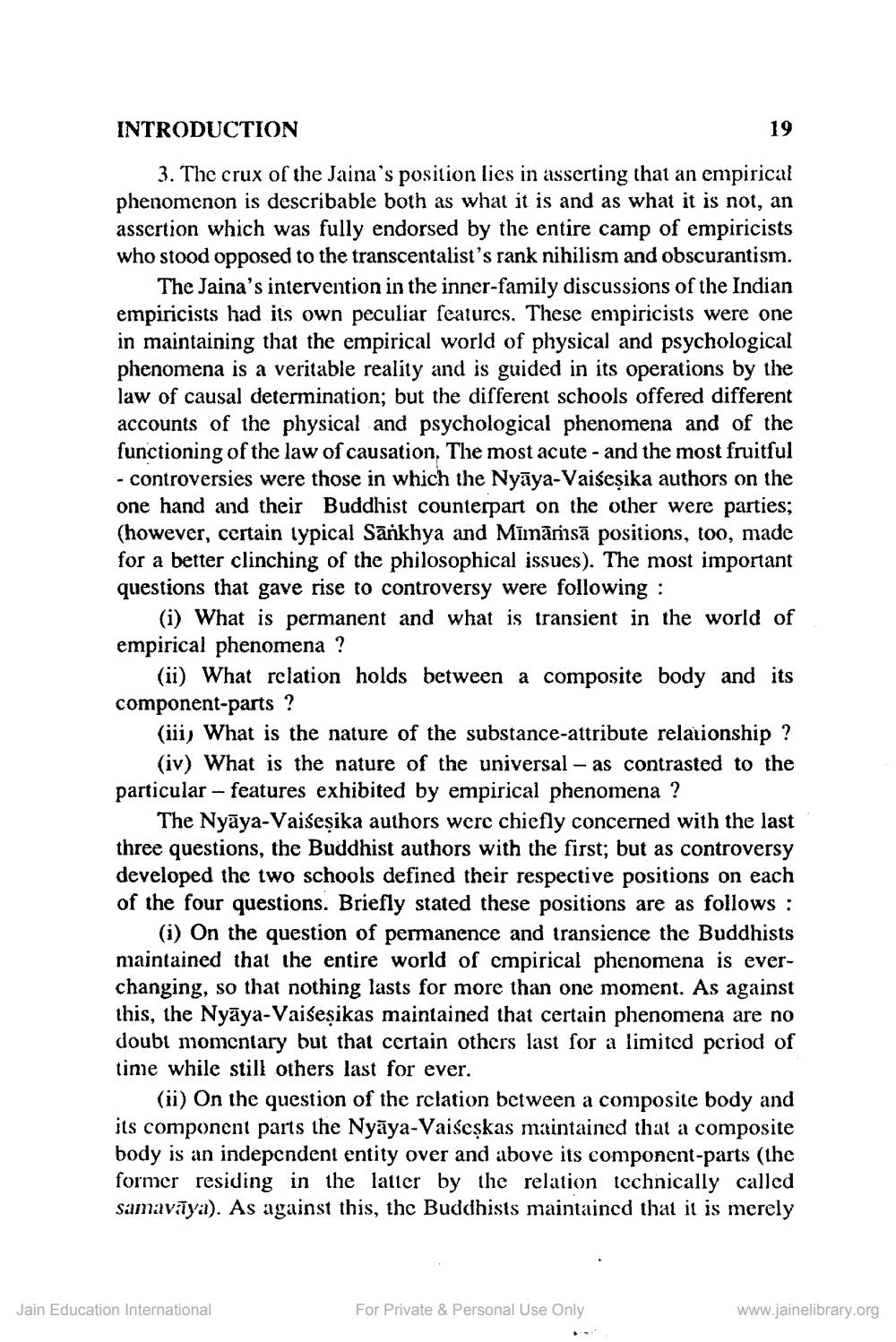________________
INTRODUCTION
3. The crux of the Jaina's position lies in asserting that an empirical phenomenon is describable both as what it is and as what it is not, an assertion which was fully endorsed by the entire camp of empiricists who stood opposed to the transcentalist's rank nihilism and obscurantism.
19
The Jaina's intervention in the inner-family discussions of the Indian empiricists had its own peculiar features. These empiricists were one in maintaining that the empirical world of physical and psychological phenomena is a veritable reality and is guided in its operations by the law of causal determination; but the different schools offered different accounts of the physical and psychological phenomena and of the functioning of the law of causation. The most acute - and the most fruitful controversies were those in which the Nyaya-Vaiseṣika authors on the one hand and their Buddhist counterpart on the other were parties; (however, certain typical Sankhya and Mīmāmsa positions, too, made for a better clinching of the philosophical issues). The most important questions that gave rise to controversy were following:
(i) What is permanent and what is transient in the world of empirical phenomena ?
(ii) What relation holds between a composite body and its component-parts ?
(iii) What is the nature of the substance-attribute relationship? (iv) What is the nature of the universal - as contrasted to the particular - features exhibited by empirical phenomena ?
The Nyaya-Vaiseṣika authors were chiefly concerned with the last three questions, the Buddhist authors with the first; but as controversy developed the two schools defined their respective positions on each of the four questions. Briefly stated these positions are as follows:
(i) On the question of permanence and transience the Buddhists maintained that the entire world of empirical phenomena is everchanging, so that nothing lasts for more than one moment. As against this, the Nyaya-Vaiseṣikas maintained that certain phenomena are no doubt momentary but that certain others last for a limited period of time while still others last for ever.
(ii) On the question of the relation between a composite body and its component parts the Nyaya-Vaiseṣkas maintained that a composite body is an independent entity over and above its component-parts (the former residing in the latter by the relation technically called samavāya). As against this, the Buddhists maintained that it is merely
Jain Education International
For Private & Personal Use Only
www.jainelibrary.org




